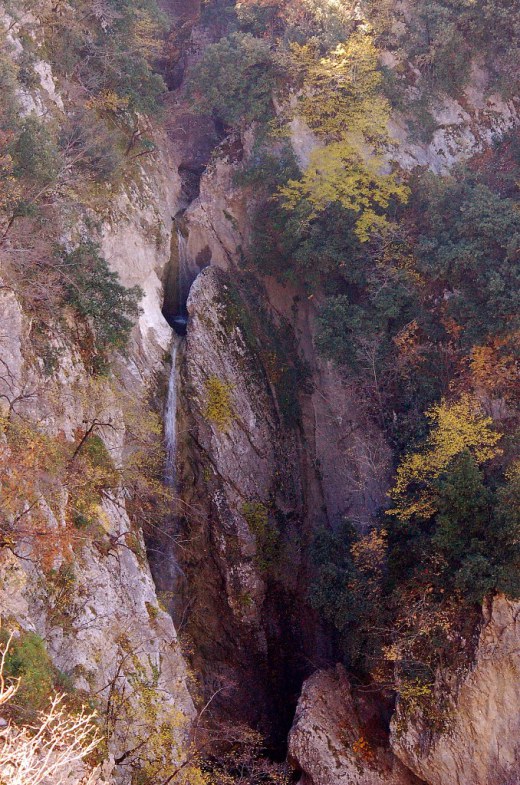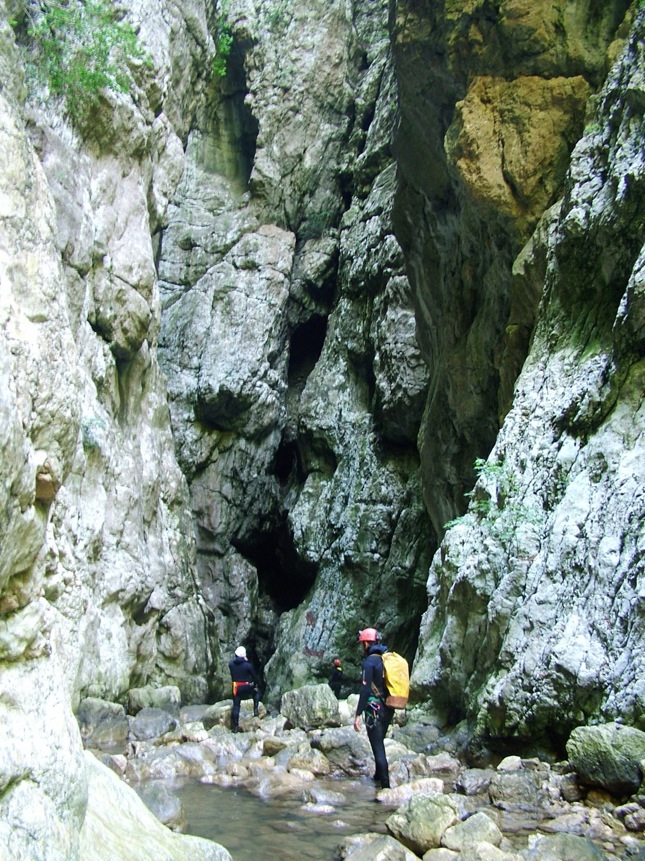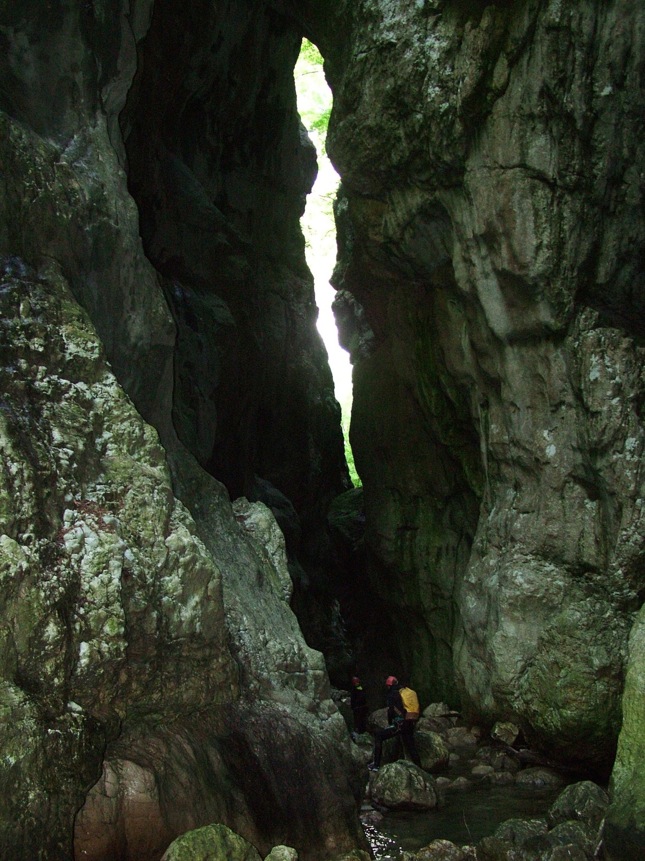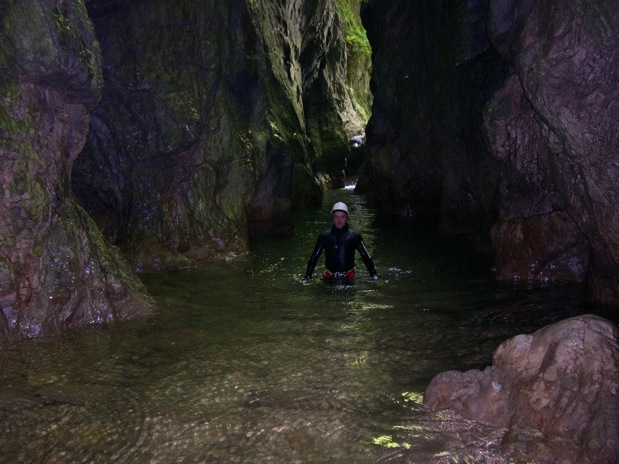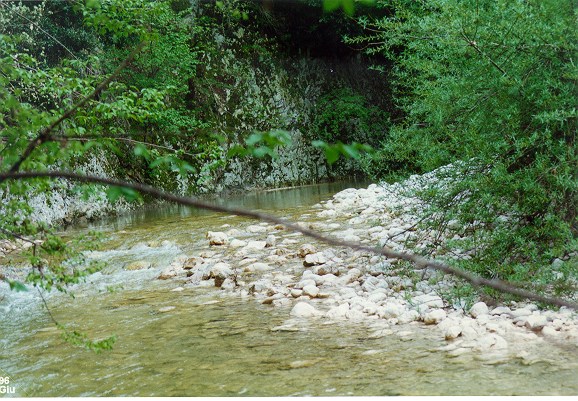
The Gorges of the Quirino Stream
This post is also available in:
 Italiano (Italian)
Italiano (Italian)
The Gorges of the Quirino Stream, located near the village of Guardiaregia, form a narrow and deep crack between the town and the heights of Torretta, with a length of about 2.17 miles from 2.624 ft above sea level in Arcichiaro, to about 1.968 ft in Guardiaregia (near the church of Santa Maria ad Nives). Listed the most important canyons of the Apennines, Quirino Gorges represent the typical incision with a double tectonic and karstic origin; in fact, the fracture caused by the great events that led to the lifting of the Matese massif was excavated and modelled in millions of years by the never-ending powerful flow of the water.
Near Guardiaregia, the Quirino canyon receives the waters of the Vallone Grande Stream, with the spectacular San Nicola Waterfall which, with three breath-taking jumps, measures a total height of about 328 ft.
The gorge is accessed near the chapel of Santa Maria della Neve, in the area of Guardiaregia, along a brooklet that flows into the stream. The first part of the route is like a large pebbly avenue, easy to tackle on foot, eventually expanding up to a width of about 131 ft. A most welcoming and majestic silence awaits down there, right after walking past the very border between the everyday world and an enchanted, unknown and most mysterious land.
Every now and then, mesmerized visitors can come across large patches of green beautifully contrasting the white pebbled road; in the groves, there’s Alpine plantain (Adenostyles alpina), butterbur (Patasites officinalis) – herbaceous perennial species with gigantic leaves, measuring even more than 20 inches in diameter.
Going up the stream, the landscape changes but the feeling of exploring a most pristine area remains as the whole place has been painstakingly preserved and protected from any “profanation” by modern civilization.
The rocks, eroded by millennia of rainfalls, show incredible plasticity in their shapes: they are real natural sculptures, often looking like eerie appearances of animals or human faces; an age-old root, dragged downstream by the current, consumed by the wind and wedged between large stone boulders, suggests a camel’s head instead.
THE ROCK
The formation of the canyon is due to several factors, like the very tectonic structure of the area featuring a network of fractures that form the hydrographic network; the lithology of the territory, made of limestone banks located in a monocline; the river erosion that deeply affected the area near the fractures.
The rocks of the canyon are made of limestone and organogenic limestone sediments in their layers and banks. Such organogenic limestones sediments originated in the Cretaceous Period, as well as many rudist fossils including a group of bivalve shells.
This post is also available in:
 Italiano (Italian)
Italiano (Italian)
Contatti
Contrada Mencaro SNC - Guardiaregia(CB)
338 3673035
guardiaregia-campochiaro@wwf.it

